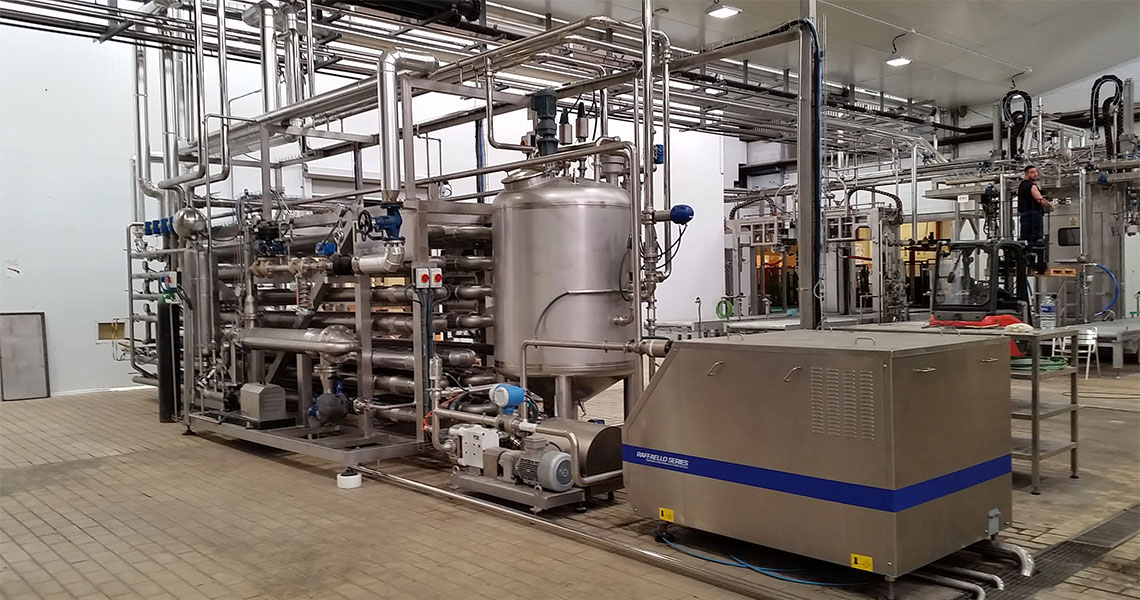Increase the pressure with annular space heat exchangers

Annular space heat exchangers, such as the HRS AS Series, work by passing the product through the gap between the inner and outer tubes (the annular space), which makes them suitable for thick, highly viscous products such as fruit purees, thick sauces, honey and syrups.
The advantage of such a design is that it ensures even heating or cooling of the product, while the use of HRS corrugated tube technology increases heat transfer and energy efficiency, as well as reducing product fouling on the tube surfaces.
HRS produces both a three- and four-tube version of the AS Series (the AS 3 and AS 4) to facilitate different arrangements and couplings of service fluid. The thicker wall on the AS 4 series means that up to 25 bar of pressure can be achieved as standard on the product side, but for some applications even higher pressures are required.
One common example is the sterilisation of tomato puree using multiple heat exchanger modules. Because of its viscous nature and the number of heat exchanger modules that may be involved in large-scale treatment (sometimes as many as 20 or 30 elements), the product needs to be pumped at considerable pressure. The physical properties of such fruit purees mean that this high-pressure handling does not adversely affect the quality of the product.
For such applications, HRS offers a high-pressure version of the AS Series. This includes thicker tube walls around the product, while the service fluid (usually water or steam) remains at standard pressures of around 10 bar. The design means that process pressures of up to 150 bar can be accommodated on the product side of the heat exchanger, making it ideal for applications such as pasteurising and sterilising tomato and strawberry purees.